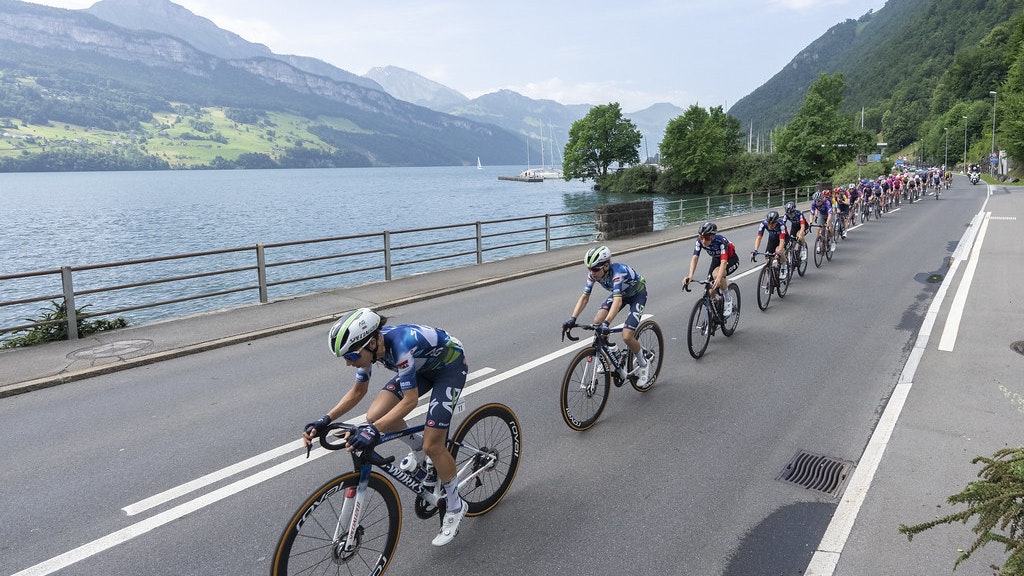Sarah Gigante isn’t rebuilding, she’s rebuilt.
After spending some seven months on the sidelines recovering from surgery to correct an iliac artery endofibrosis diagnosis – the 24-year-old interjects at the suggestion that her delayed 2025 campaign may be a case of slow and steady.
“Oh, I hope not. I don’t feel like I need a year to rebuild, I’ve done that,” Gigante says.
The former national road champion opened her season at the Tour of Norway last month - the feeling to finally be back in the peloton racing, after an intricate surgery, and long, tedious recovery, visceral.
“I was really nervous actually, my leg was shaking before the start, which I hadn’t seen before,” Gigante recalls. “I think I was just so excited. It wasn’t a bad feeling of nerves, it was just something I haven’t done in a very long time, but I’ve been looking forward to. It’s like all the hard work was to be here.”
Up until then, Gigante (AG Insurance-Soudal) hadn’t competed since representing Australia at the UCI Road World Championships in September. There in Switzerland she’d attributed numbness in her right leg to the cold of a European autumn. Earlier, at the Tour de France Femmes, she’d put discomfort down to hard racing.
It wasn’t until Gigante began pre-season training toward the end of last year that her condition – where the iliac artery in the leg thickens and restricts blood supply to the lower body – was confirmed.
“Over a couple of years, I lost more and more power on my time trial bike and trying to do efforts seated, but I didn’t realise there was a real problem until I started getting, in hindsight, the numbness,” Gigante recalls.
“I noticed the numbness the first time in the Tour de France and then at Worlds my leg was quite numb, but it only came when I was going so hard, and you’re in a lot of pain anyway, so I just ignored it.
“But then when I went home to Australia, I tried to start training again … it just got worse and worse. It felt like burning in my whole quad – like it was on fire.”
The condition can be common in rowers and cyclists, but Victorian Institute of Sport cycling endurance coach Vanessa Bof says it is also easy to miss.
“The condition itself goes a lot of the time undiagnosed, essentially a lot of others will get it,” she says.
Gigante is a regular at the national road championships and early season racing scene in Australia, her passion for it one of the reasons why she terminated a contract with Movistar to join AG Insurance – Soudal at the beginning of last year. Instead of defending her title at the Tour Down Under in January this year, however, Gigante, in her own words, practically lived at the Victorian Institute of Sport (VIS), where a four-person specialist team worked tirelessly on her diagnosis, recovery and rehab.

Sarah Gigante pictured at the 2024 Tour de France Femmes. Photo: ASO
“I pretty much only trained inside in November because I had a lot of pain before the surgery,” Gigante recalls. “Lots of Zwift, which I can tell when I’m in a peloton trying to go downhill. It feels really good to be back, especially to be back with my teammates because I watched every race from Australia, but I felt like I was someone that trained really hard and cheered on my team, rather than be part of the team.”
The surgery itself was involved.
“It involves cutting right down to the artery, clearing it out, unkinking it. In my case, shortening it as well. It’s quite dangerous surgery, so lots of time off any exercise at all after that,” she says.
However, the time off and rehab was perhaps even more challenging. Bof says that Gigante had to remain flat and wasn’t allowed to bend over for the first couple of weeks following the procedure and couldn’t ride for 12-16 weeks.
“I’ve worked with a lot of athletes and Sarah’s resilience and ability to cope with the unknown in such a stressful time and scenario was incredible,” Bof says.
“She also worked really closely with our psychologist, Dean Cooper, through this period. I think the mental challenge was just as tough as the actual physical challenge of recovering from the injury.”
On top of that was physio initially five times a week, which was then reduced to four times, then three times with as many gym sessions mixed in.
“I started with walking up and down the pool keeping my heart rate at like 70 beats, so very slow build, and then I went to the elliptical,” Gigante says. “I did lots of walking. Then I used a gravel bike - for even inside, just because it was more upright - for probably three months.
“I just jumped on my time trial bike for the first time last week, so now I feel normal again, which is nice.”
Gigante finished 12th overall at the Tour de Suisse on the weekend after marking a stint in the Queen of the Mountain jersey and supporting teammate Urska Zigart to fifth on general classification behind winner Marlen Reusser (Movistar). Speaking from there, her race program is also indicative of a clear desire to go all-in and focus forward – with the Giro d’Italia and maybe even the Tour on the horizon.
“My climbing is good, but I need to work on the descending, so keep improving race by race. My next race is the Giro, which has some nice mountain-top finishes,” she says.
“It’s definitely a bit of a shock to the system. It hasn’t been perfect and definitely a bit frustrating to feel strong and then not race exactly how I’d love to race, but then on the other hand I can take a lot of confidence from my form.
“I’m definitely stronger than I expected.”
